Caribbean script. Part 1
At present, Russian-American relations are at the lowest level in the last 25 years. Major politicians and prominent public figures began talking about the start of the new “Cold War”, and the military does not rule out the occurrence of various kinds of incidents between the Russian Aerospace Forces and the US Air Force and Russian and American special forces in Syria. All this is happening against the background of the extremely militant rhetoric of some politicians, both in our country and in the West. Irresponsible statements warm up the degree of political tension and contribute to “hurray-patriotic” sentiments among the part of the townsfolk. Unfortunately, this is also reflected on the Military Review website. But our countries once were already one step away from the “nuclear apocalypse,” and only the restraint of the leaders of the USSR and the USA avoided the start of a full-scale suicidal conflict.
At the start of the 60, the United States deployed 60 medium-range ballistic missiles (PGMD) PGM-17 Thor in the UK. The Torahs in the UK were followed by PGM-45 Jupiter 19 missiles in Turkey and Italy. The Thor and Jupiter missiles could deliver a W49 1,44 Mt warhead to the 2400 km range. The advantage of "Jupiter" was its mobility. Unlike the Torah, which started from a stationary position, the Jupiter could be launched from a mobile launching pad, which increased the survivability of the missile system.
In 1962, the Americans had a significant advantage in strategic nuclear forces (SNF). At that time, there were about 3000 warheads on strategic carriers in the United States, and about 500 in the USSR. By the beginning of 1962, the United States Air Force and Navy, taking into account tactical carriers deployed in Europe and Asia, had more than 1300 bombers in service. The strategic and tactical American and British bombers stationed in Europe had a short flying time. Fuel supply aboard US strategic aircraft aviation and refueling in the air allowed them to carry out combat patrols with thermonuclear bombs on board along the borders of the USSR. In addition, the US strategic nuclear forces included 183 SM-65 Atlas and HGM-25A Titan ICBMs and 144 UGM-27 Polaris ballistic missile submarines (SLBMs) in nine nuclear submarines with ballistic missile submarines of the George Washington and Ethan Allen type.
The Soviet Union had the opportunity to deliver warheads around 400 to the United States mainly with the help of strategic bombers and the P-7 and P-16 ICBMs, which required lengthy preparation for the launch and the high cost of building launch complexes. The economic opportunities of the Soviet Union, which suffered enormous human and material losses in the war, did not allow us to achieve parity with the United States in the field of strategic weapons at the beginning of the 60s.
Placing the BRSD "Thor" and "Jupiter" in Europe provided Washington with a number of serious advantages in the event of a nuclear conflict. The flight time of the American missiles launched from the territory of England, Italy and Turkey was 10-15 minutes, and their number in 1962 was quite enough to destroy the positions of the few Soviet ICBMs, strategic bombers' airfields, communications centers and radar warning systems for rocket attack. In addition, by deploying its nuclear attack forces in Europe, the United States reduced the number of Soviet nuclear charges in a retaliatory strike on its territory and reduced its own losses.
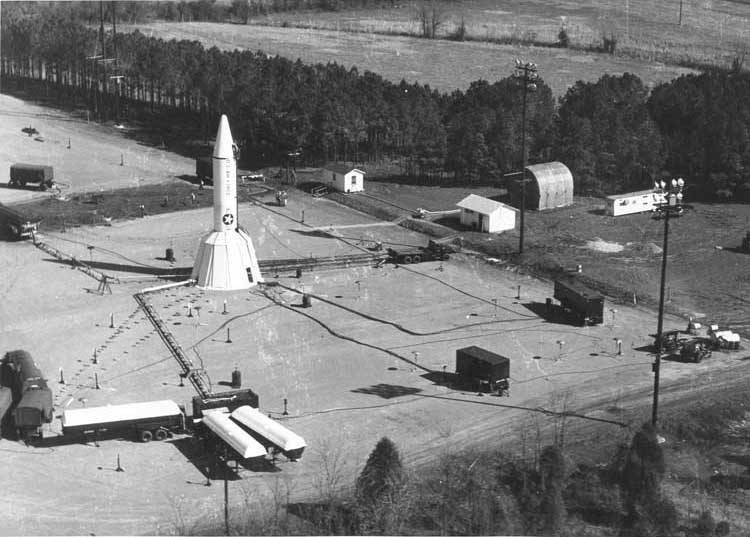
For the Soviet Union, the American MRBG posed a deadly threat. The USA, having placed rockets in Europe, radically changed the balance of forces of the first strike in their favor. The USSR urgently needed adequate responses to restore balance. By that time, the Soviet strategic submarine fleet was under construction and was not yet a significant force. Diesel submarines with submarine-launched submarines 629 did not carry a big threat to the United States: while on combat patrols, they could hit targets in Western Europe and American bases in the Pacific. By October, the 1962 of the Soviet Navy had five nuclear-powered ships, 658, but they were significantly inferior to the American SSBNs in terms of the number and range of missile launches.
The USSR was a vital bridgehead, from which the Soviet MRBM P-12 and P-14 could create a similar threat to the United States, thereby restoring the status quo of the possibility of causing "unacceptable damage" to a potential enemy. The only place at that time where it was possible to place Soviet medium-range missiles was Cuba. The combat radius of the P-12 (2000 km) and P-14 (4000 km) missiles made it possible to threaten a large part of the US territory, especially its south-eastern regions with numerous large cities and industrial centers, on the “Island of Freedom”. But for the realization of these plans, it was necessary to have Cuba friendly for the USSR and to protect it from the threat of overthrowing F. Castro by the United States. After the defeat of a counter-revolutionary naval assault formed by Cuban émigrés on Playa Chiron, the economic blockade of the “Island of Freedom” began, and there was a constant risk of invasion of the American troops directly. In order to strengthen the defense of the island in April 1962, it was decided to send to Cuba 4 air defense systems С-75, 10 IL-28, 4 launchers of anti-aircraft missiles П-15. By October 22, a group of 40 thousands of Soviet troops was deployed on Cuban territory, headed by Army General I.A. Pliev. The main strike force of the Soviet contingent were 42 ballistic missiles P-12 with a range of up to 2000 km. They had 36 thermonuclear warheads with a power of 1 Mt. However, the missiles were not on alert. The P-12s themselves were stored in open areas or in hangars. Warheads - separate from the rockets in the caves at a distance of a kilometer from the launch positions. It took 3 hours to dock the warhead to the missile, and 15 minutes to bring the missile to combat readiness.
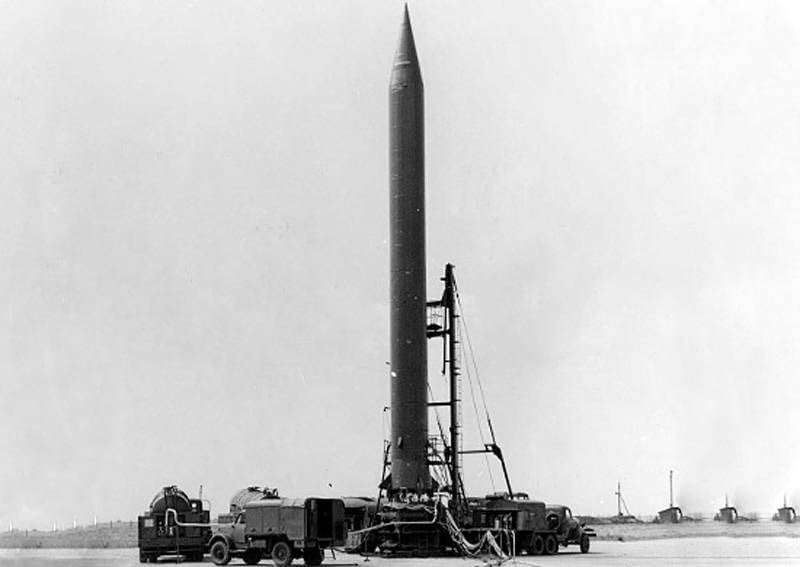
In addition to ballistic missiles, IL-28 bombers, FKR-1 front-line cruise missiles, Luna tactical missiles, MiG-21-F-13, S-75 air defense systems, anti-aircraft guns and missile boats of pr.183R were deployed on Liberty Island. as well as motorized rifle and tank parts. Due to the imposed blockade, it was not possible to deliver all the equipment and weapons. So, for example, Soviet ships with the R-14 BRDS under threat of use weapons from the warships of the US Navy were forced to turn back. At the same time, the nuclear warheads for the P-14 and the personnel of the missile battalions were already in Cuba. The P-14 missiles had a launch range of up to 4500 km and would have swept most of the United States, up to the west coast.
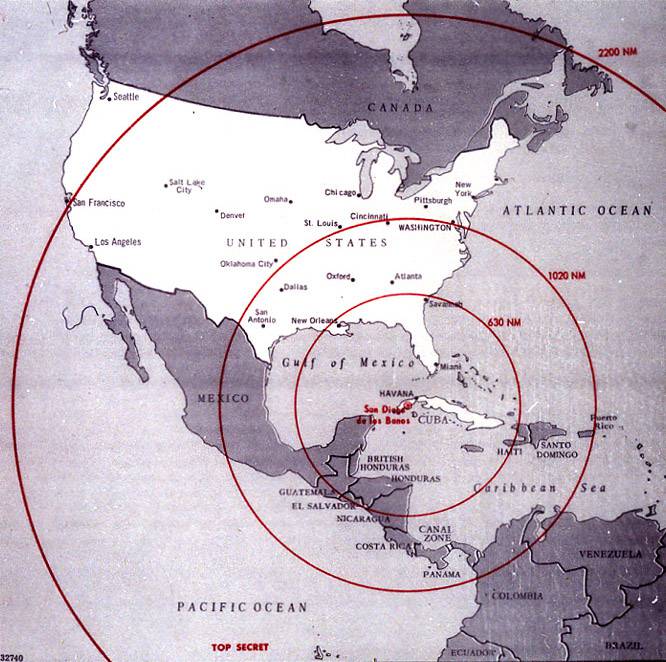
The radii of destruction of the Soviet missiles and Il-28 bombers, a large radius - BRSD R-14 (not located in Cuba).
The P-12 missiles launched from Cuba were capable of striking targets in the United States before the Washington-Dallas line, and presented a threat to the United States that was similar to the one created for the USSR by American missiles deployed in Europe. The appearance of Soviet ballistic missiles in Cuba was a shock for the Americans. Of course, they knew that Soviet transports delivered equipment and weapons to the island, but after 14 on October 1962, the reconnaissance U-2, piloted by Major Richard Heyzer, crossed all of Cuba from south to north, it became known about Soviet missiles on the island. In spite of the fact that necessary measures were taken to camouflage the missile sites, the safety of storing missiles and warheads, the prepared missile positions and the stored missiles were easily read on aerial photographs. The fact of the delivery of missiles to Cuba caused the ire of the American leadership, since Soviet official representatives did not make an official statement about this in the relevant international organizations. At the same time, American missiles in Turkey were placed openly, and the USSR government was notified of this in advance. This circumstance played an important role in the escalation of the Soviet-American crisis.
After the Soviet missiles in Cuba were discovered, by Kennedy's orders, reconnaissance flights increased from two a month to six a day. This, of course, contributed to the exacerbation of the situation, especially since supersonic tactical aircraft which flew at low altitude began to be involved in conducting reconnaissance. At the end of October, a pair of MiG-21 fighters attempted to intercept and land the American reconnaissance aircraft RF-101 at their airfield, but he managed to escape.
October 19 during the next flight of the U-2, several more trained missile positions were discovered, Il-28 bombers at the airfield off the northern coast of Cuba and the FKR-1 front-line cruise missiles located on launchers on the east coast of Cuba.
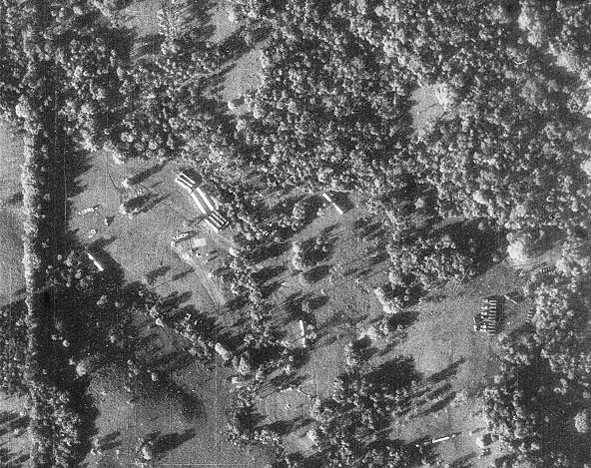
October 22 President Kennedy addressed the nation on television, announcing the presence of Soviet missiles in Cuba. He also warned that the armed forces were “ready for any development of events” and condemned the USSR for “secrecy and misrepresentation”. The flywheel of confrontation continued to unwind, the US Congress recommended the president to use force to eliminate the missile threat. Top American military leadership has proposed to launch a military operation against Cuba. The generals were hurrying the president to order the strike, because they feared that when the USSR deployed all the missiles, it would be too late.
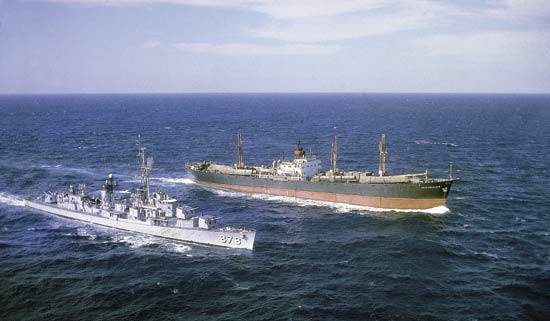
October 24 from 10 in the morning the Americans imposed a complete naval blockade of the "Island of Freedom". Officially, it was called the “quarantine of the island of Cuba,” since the blockade meant an automatic declaration of war. The US Navy demanded that all ships entering the Cuban ports stop and present the cargo for inspection. In the event of a refusal to allow an inspection team on board, the ship was to be arrested and escorted to the American port under escort. In addition to the "blockade", preparations began for the beginning of a possible invasion of the island. A tank and five infantry divisions were redeployed to the southwest United States. Strategic bombers B-47 and B-52 conducted constant patrols in the air, tactical aircraft were deployed at civilian airfields in Florida, 180 US Navy warships were pulled to Cuba.
In response, the Armed Forces of the USSR and the Warsaw Pact countries were put on high alert. This meant the abolition of all vacations and layoffs, as well as the withdrawal of a part of the troops with equipment and weapons beyond the boundaries of their permanent locations. Combat aircraft were dispersed over alternate aerodromes, warships entered the sea. Most of the Soviet atomic and diesel submarines in a state of combat readiness, after loading torpedoes and missiles with “special” combat units, advanced to the areas of combat patrol. At that time in the USSR as part of fleet there were 25 diesel and nuclear submarines with ballistic missiles and 16 boats with cruise missiles designed to destroy coastal targets.
By 24 in October, the situation worsened, the brother of the American President Robert Kennedy at a meeting with the Soviet ambassador Dobrynin during a discussion of the blockade of Cuba said: “I don’t know what this will all end, but we intend to stop your ships. In response, Khrushchev in his letter called quarantine "an act of aggression, pushing mankind to the abyss of a world nuclear missile war." He warned Kennedy that "the captains of Soviet ships would not comply with the requirements of the US Navy," and that "if the United States does not stop its piracy, the USSR government will take any measures to ensure the safety of ships."
25 October, the US president ordered to increase the combat readiness of the Armed Forces to the level of DEFCON-2 (eng. DEFense readiness CONdition - readiness of defense). This level precedes maximum alert. The first level declaration meant readiness for a nuclear strike. At that moment, mankind was closer than ever to the beginning of a full-scale conflict between the USSR and the USA. And do not show the leaders of the great powers of restraint, the case could end in mutual destruction.
At that moment, the situation in Cuba was tense to the limit, the command of the Soviet contingent on the island and the Cuban leadership were waiting for the start of a US invasion or a large-scale air strike. On October 27, a U-75 Major Rudolf Anderson was shot down by a C-2 anti-aircraft missile in Cuban airspace during a regular reconnaissance flight. On the same day, two US Navy photo reconnaissance aircraft RF-8A were fired upon by anti-aircraft artillery during a low-altitude reconnaissance flight. One plane was damaged, but managed to reach its airfield.
Let's imagine the darkest scenario. What would happen if President Kennedy’s nerves didn’t stand, and he would be led by the military? Taking into account the fact that at that time the American intelligence already knew about the presence of Luna tactical missiles with nuclear warheads in the composition of the Soviet troops in Cuba, there was no talk of an amphibious operation. To eliminate the "Soviet missile threat" would be involved aviation. The first strike involved tactical and carrier-based aircraft operating at low altitudes, while nuclear bombs were not used. The missile positions of the 79 and 181 missile regiments, as well as airfields, were subjected to intensive bombardment. The MiG-21 fighters, the C-75 air defense missile system and anti-aircraft artillery, which had time to rise into the air, put up fierce resistance, but the forces were clearly not equal. At the cost of losing about two dozen combat aircraft, the Americans manage to destroy all Soviet P-12 missiles, Il-28 bombers, radar, most of the fighters and destroy the runways of the main airfields. After tactical aviation, the B-47 and B-52 bombers come into play, which “clear” the area with massive areal strikes. However, part of the tactical "Moon" and the FKR-1 cruise missiles, hidden in the jungle, survived, which subsequently became an unpleasant surprise for the Americans.
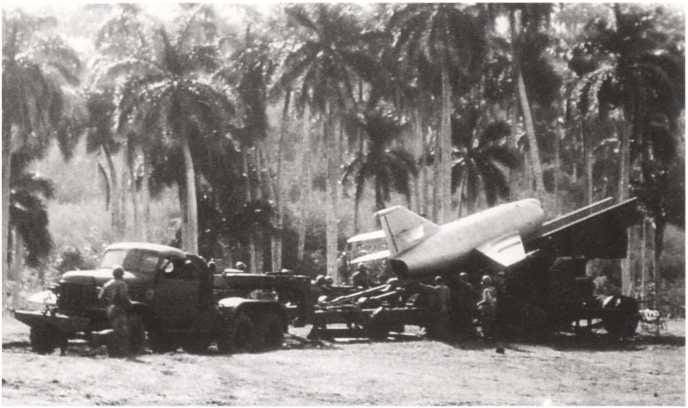
The entire air operation, taking into account the actions of strategic bombers, took three hours, after which the Chief of Staff of the US Air Force, General LeMay, reported to the President that the Cuban missile threat had been completely eliminated. Simultaneously with the anti-submarine forces of the US Navy in the Caribbean after establishing acoustic contact, three Soviet diesel submarines were sunk as the commander of the American fleet decided they were a threat and several ships of the Soviet merchant fleet were arrested. American troops around the world are on high alert, including medium-range ballistic missiles in Europe.
The Soviet leadership, having received news from Cuba and intelligence information about preparations for the launch in Turkey of the Jupiter MRSD, regards this as the beginning of a full-scale aggression against the USSR and decides to launch a preemptive strike. Approximately 100 of the Soviet Р-12 and Р-14 missiles in the morning of October 28 are attacking famous deployment sites of the Jupiter MRSD in Italy and Turkey and Thor in the UK. More than 80 nuclear warheads explode over the proposed deployment areas of US missiles and the US and British strategic bomber bases. Wanting to get by with “little blood” and limit the zone of combat operations, the Soviet leadership does not give the order to start attacking objects in the United States, while the Soviet ICBMs and strategic bombers remain on their bases.
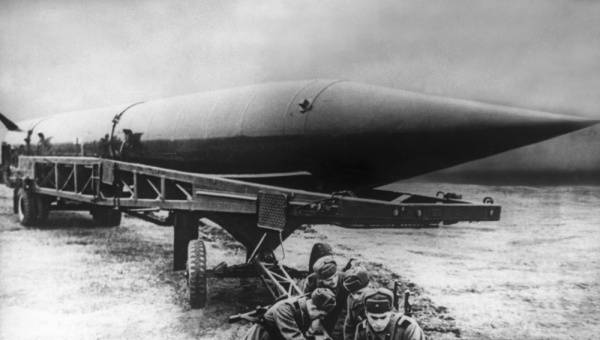
For technical reasons, not all medium-range Soviet missiles reached their goals, in addition, part of the “Jupiter” was taken out of the limits of American missile bases and avoided destruction. Approximately 20 "Jupiter" from mobile launchers and 10 "Thors" from the Fleetwell base in Scotland were launched in response, the decision was made by the US Air Force Command in Europe. The positions of the 43 th rocket army in Ukraine are subjected to nuclear strikes. As a result of this attack, about a third of Soviet medium-range ballistic missiles were destroyed. However, there are still about 100 MRBGs in the USSR, which can be quickly prepared for launch, most of which are Р-5М and Р-12. As soon as they are ready, these missiles are launched at naval bases, large airfields, and known places of NATO troop congestion. The surviving P-14 missiles launched from positions in Ukraine destroyed several cities in the UK, including London and Liverpool. The P-12 50 th rocket army deployed in the Baltic States hit the RAF airbase in the UK with the 2,3 megaton thermonuclear warheads and the US submarine Holy Loch Scotland. The destruction of the Holy Loch base makes it impossible for American SSBNs operating in the North Atlantic to replenish their ammunition and carry out the necessary maintenance. As a result of the explosion of a torpedo with a nuclear warhead, fired from a Soviet submarine pr.NUMX, secretly penetrated into the Sea of Marmara, the coastal part of Istanbul was severely damaged. The blows of nuclear torpedoes from the Black Sea destroyed the Turkish naval bases Sinop and Samsun. In addition, Soviet rocket diesel submarines pr. 613, front-line cruise missiles FKR-629 and operational-tactical P-1 deployed in the GGV are connected to the attacks. The launches of the front-line cruise missiles on targets in Germany destroyed the shipyards in Hamburg, the Spandal air base and Geilenkirchen. The warheads of the missiles launched from the Soviet missile boat, disabled American radar anti-ship warning system AN / FSP-11 and the runway at the Thule airbase in Greenland. The following were destroyed: Amsterdam, Bonn, Cologne, Frankfurt, Stuttgart, Paris, Dunkirk, Dieppe, Rome, Milan, Turin. Especially got to Paris because of the NATO headquarters located there, the city center was turned into ruins as a result of the explosions of the two P-49 warheads.
MTR-1 Honest John, MGR-3 Little John, MGM-5 Corporal and CG MGM-13 Mace with response bases in Germany and France and nuclear bombs from tactical aircraft destroyed the GGV headquarters in Wünsdorf, headquarters of the Southern Group of Forces in Budapest , the headquarters of the Northern Group of Forces in Legnitz, the headquarters of the 16 Air Force in Woltersdorf and the airfields of Wittstock, Grossenhain and Rechlin.
At the first stage of military operations with the use of nuclear weapons in the European theater of operations as a result of a preemptive attack and the withdrawal of some of their forces from attack, the Soviet Union managed to minimize its own losses. At the same time, it was not possible to solve the problem of the complete destruction of American MRBRs in Europe and to avoid reciprocal launches. The losses of the parties during the exchange of nuclear strikes exceeded 4 million people killed and about 11 million - wounded, burned and received high doses of radiation. Huge territories as a result of nuclear explosions turned into a zone of continuous destruction.
After news of the attack on US missile positions in Europe, all of the top US military and civilian leaders are urgently evacuated from Washington and after three hours they are going to an emergency meeting in a secret atomic shelter carved out of Mount Weather near the town of Berryville (Va.). After a brief discussion of the situation, John F. Kennedy orders the nuclear bombardment of the USSR by all available means.
Having received the order of the president, the command of the US Navy from a special communication station in Norfolk transmits a low-frequency coded signal with the command to launch missiles to submarines in combat positions. In preparation for launching the A1 Polaris SLBM and checking missiles, it goes from 15 to 30 minutes. After that, the SSBN 598 "George Washington", SSBN 599 "Patrick Henry" and SSBN 601 "Robert E. Lee" submarines in the North Atlantic give 16 rocket volleys. For each target was launched two missiles with 600 CT warheads. At the level of technical reliability of 0,8 missiles, this ensures the destruction of the target with a high degree of probability. The bases of the Northern and Baltic fleets in Gremikha, Vidyaevo, Polyarny, Baltiysk, the cities of Arkhangelsk, Severomorsk, Murmansk, Severodvinsk, Olenye, Bykhov, Lakhta and Luostari airfields, as well as facilities in the Baltic, Leningrad and Kaliningrad regions are subjected to nuclear strikes.
SSBN 608 Ethan Allen and SSBN 600 Theodore Roosevelt SSBNs launch rockets from the Mediterranean. The purpose of these missiles become objects of Crimea and on the Black Sea coast. First of all, the Black Sea Fleet sites in Sevastopol, facilities in Balaklava, Novorossiysk, Odessa, Guards, Belbek and Saki air bases are affected.
As of mid-October 1962, the US Navy had four Eten Allen-type SSBNs with A2 Polaris with a launch range of 2800 km. It can be assumed that by the beginning of the conflict there were two boats of this type on combat duty, their missiles already allowed to hit targets deep in the territory of the USSR. In addition, the Polaris A2 was the first missile on which the means to overcome missile defense were installed.
The American SSG-574 "Greyback" and SSG-577 "Grauler", ascending to the trap of the Aleutian Islands, launch SSM-N-8A Regulus cruise missiles in the fleet in Vilyuchinsk. The SSGN-587 “Khalibat”, in turn, launches the CD on the Pacific Fleet bases in Primorye. The boat itself was unlucky, she was caught in the surface position and sunk by anti-submarine aircraft Be-6.
Some of the cruise missiles were shot down by C-75 and fighters, but they had broken through with more than enough to make objects in Kamchatka and Primorsky Krai unsuitable for further use. Nuclear strikes A-3 and A-5 are bombing the coastal regions of the USSR in the Far East. The ports of Vanino, Kholmsk, Nakhodka, the city of Komsomolsk-on-Amur, Yuzhno-Sakhalinsk, Ussuriysk, Spassk-Dalniy were badly damaged. The impact of American cruise missiles on Vladivostok and the attempt to break through the deck bombers are reflected by air defense weapons. Unable to break through to the city, an American bomber drops an atomic bomb at an air defense position on Russky Island. Link Skywatch tried to strike at Khabarovsk, but was shot down by fighters.
In response to Alaska and American facilities in Asia and within reach, P-5M and P-12 and P-14 45-rocket division located in Primorye fall. The Kadena and Atsugi airbases, the Yokosuka and Sasebo naval bases, the parking of the ships and the airfields on the island of Guam are subjected to atomic strikes. Several warheads of Soviet MRBDs succeed in knocking down American long-range air defense systems MIM-14 Nike-Hercules. Most of the missiles of this type of anti-aircraft missiles, which are at the disposal of the US Army, were completed with a nuclear warhead. Nike-Hercules had certain anti-missile capabilities, the real probability of defeating an ICBM warhead was 0,1, in other words, the 10-th anti-aircraft missiles could repel an attack of a single ballistic missile.
After the first nuclear explosions thundered, preparations began for the launch of an ICBM. But if the Soviet leadership initially refrained from nuclear bombardment of the continental territory of the United States, the Americans were not tormented by doubts. In the afternoon of October 28 1965 of the year for half an hour on the territory of the Soviet Union launched the 72 ICBM of the mine-based SM-65F Atlas. Following the mine Atlases, as soon as they are ready, they launch SM-65E Atlas ICBMs stored horizontally in protected sarcophagi and HGM-25A Titan stored in mines, but requiring longer preparation for launch and radio command control in the upper stage. In general, more than 150 rockets will be launched from the United States within two hours.
Their goals are mainly large administrative and industrial centers of the USSR, long-range aviation airfields, naval bases and positions of Soviet ICBMs. Several missiles exploded at the start, another part left the trajectory due to malfunctions, but more than 70% of the warheads were delivered to the intended targets. The 2-4 MBR is aimed at each target, depending on the degree of importance. One of the priorities is Moscow. The Kremlin and the city center are completely destroyed by the explosions of four 4,45 Mt warheads. The Baikonur cosmodrome was covered and destroyed together with the P-7 and P-16 ICBMs that are about to be launched. Objects of the Soviet nuclear industry are subjected to nuclear strikes. The underground complex "Arzamas-16" received serious damage as a result of the explosions of two 3,75-megaton warheads of ICBM "Titan", put on the contact blasting at the surface.
After the first wave of ballistic missiles, the B-47, B-52 and B-58 bombers invade the airspace of the USSR, their actions cover the EW EB-47E aircraft. In total, before the outbreak of hostilities in the Royal Air Force of Great Britain and the United States Air Force, there were more than 2000 long-range bombers, of which about the 300 aircraft took part in the first raid. The Americans are actively using the AGM-28 Hound Dog aircraft cruise missiles, which disperse the forces of Soviet air defense, which, in addition to the bombers, has to fight with them. At that time, there were more than 500 cruise missiles in the US Air Force; in the first attack, around 150 was used.
Participating in the bombing of the USSR aircraft could be much more, but almost all British long-range bombers and part of the US destroyed at the bases of the RAF as a result of the preemptive Soviet strike with medium-range missiles and the actions of missile submarines. Many airplanes caught in a nuclear attack in the air have nowhere to return and they make forced landings on unsuitable for receiving heavy vehicles, or their pilots are thrown out by parachute after the production of fuel.
The breakthrough of American bombers is also facilitated by the ionization of the atmosphere after numerous nuclear explosions, the surviving Soviet ground-based radars often due to interference simply did not see aerial targets. In addition, the relatively poor SAM covered only Moscow. However, multichannel C-25 turned out to be practically useless. American intelligence was well-informed about their capabilities, and one B-52 and two B-47, accidentally invading the Moscow air defense zone, became victims of the stationary complexes. In 1962, the basis of the fighter aircraft in the USSR was the MiG-17, MiG-19 and Yak-25, by that time these aircraft did not fully meet modern requirements, and the new supersonic MiG-21 and Su-9 were still a little bit. Only four years have passed since the C-75 air defense system was adopted, and the industry has not yet had time to build them in sufficient quantities, and 85, 100, 130-mm anti-aircraft guns, even with radar-controlled gun stations, proved to be ineffective against reactive strategic bombers. Soviet air defense destroys up to a third of the invading bombers and half the cruise missiles. Soviet pilots, shooting ammunition, often go to the ram, but they are not able to stop all the bombers.
In total, as a result of strikes by ICBMs and long-range bombers, more than 150 Soviet strategic facilities, including nuclear facilities, naval bases, long-range aviation aerodromes, defense enterprises, large power plants and command centers, were completely destroyed or permanently damaged. In addition to Moscow, Leningrad, Minsk, Baku, Kiev, Nikolaev, Almaty, Gorky, Kuibyshev, Sverdlovsk, Chelyabinsk, Novosibirsk, Irkutsk, Chita, Vladivostok and a number of other cities were completely destroyed. Objects in the countries of the Eastern Bloc are also bombed. Although the evacuation of the population was announced in advance, many do not have time to hide in shelters or leave the city limits. As a result of nuclear missile attacks and bombing in the Soviet Union and the Warsaw Pact countries, more than 9 million people died, another 20 million suffered to one degree or another. The number of destroyed industrial enterprises, military and civilian objects exceeds that for the entire Second World War.
In October, the 1965 of the year in the USSR, the launch sites were 25 MBR P-7 and P-16. These missiles required a fairly long preparation for launch. Despite the fact that they began to be prepared almost simultaneously with the receipt of an order to strike at the MRBD, the Soviet response to the United States was delayed. About a quarter of the Soviet missiles were destroyed at the launch sites, and only the 16 P-16 and 3 P-7 were able to launch. By virtue of the large QUO, Soviet missiles carrying 3-6 Mt thermonuclear warheads were aimed at major cities and air bases where strategic bombers were stationed. From 19 goal launched missiles reaches 16. Two warheads shot down by concentrated volleys of Nike-Hercules anti-aircraft with nuclear warheads.
Now it is the turn of Americans to know all the horrors of nuclear war. In New York alone, more than half a million people have been killed by explosions of two warheads. Are destroyed Washington and San Francisco. For a short period of time, thermonuclear strikes are almost simultaneously carried out on the strategic aviation command air bases: Altus, Grissom, Griffis, MacConnel, Offut, Fairfield-Swisson, and Francis Warren. According to the results of rocket attacks, the destruction at these air bases reach 80%. Due to the partial dispersal of aircraft on secondary airfields, it is possible to somewhat reduce the damage, but about 30% of long-range bombers are lost. Due to the destruction and radioactive contamination of storage facilities with nuclear bombs and cruise missiles, the usable American nuclear arsenal that is usable for further use is significantly reduced.
After the attack of the ICBMs, the FKR-1 cruise missiles hid in the Cuban jungle and were written off by the Americans were taken into account. In the direction of Florida, with a small interval, eight missiles were launched. Before launching the CD to the US coast, tactical "Luna" will be the first to start. Having flown about 30 km, the rocket falls into the sea in the area patrolled by American warships and its nuclear warhead is activated. In this case, two American destroyers were destroyed, and several more warships were damaged. But, most importantly, American radars that monitor the airspace over Cuba are disabled by an electromagnetic pulse, and the curtain impermeable to radiation from radars does not allow to detect and intercept cruise missiles flying at a subsonic speed at an altitude of 600-1200 meters. Their targets are Key West, Opa Loska, Miami and Palm Beach. In response, the American tactical and carrier-based aircraft once again bombed the intended locations for cruise missile launchers, and the B-47 bombers dropped several nuclear bombs on Havana and the deployment sites of Soviet military units.
Soon, three P-13 missiles with submarines Ave. 658, which was at the beginning of the crisis on combat patrols in the Pacific Ocean, destroyed the city and the large naval base of San Diego. After the launch of the missiles, the boat itself was discovered and sunk by US anti-submarine forces. But at the cost of her death, she destroyed two American aircraft carriers, three dozen major combat and landing ships, and naval aircraft near 60.
To be continued ...
Based on:
//militera.lib.ru/research/orlov_as1/06.html
//alternathistory.com/karibskii-armageddon-chast-i
//alternathistory.com/sootnoshenie-yadernykh-sil-ovd-nato-na-moment-karibskogo-krizisa
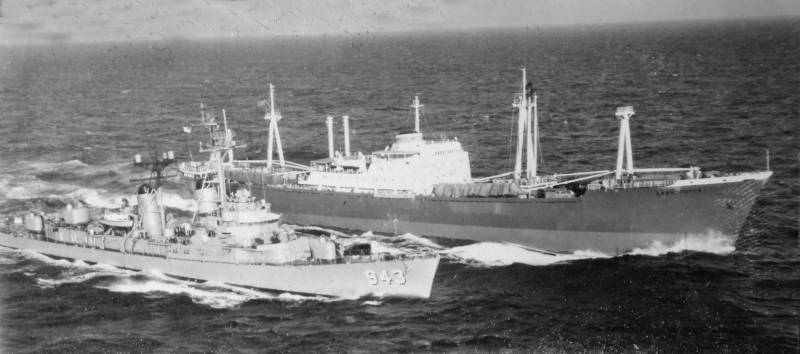
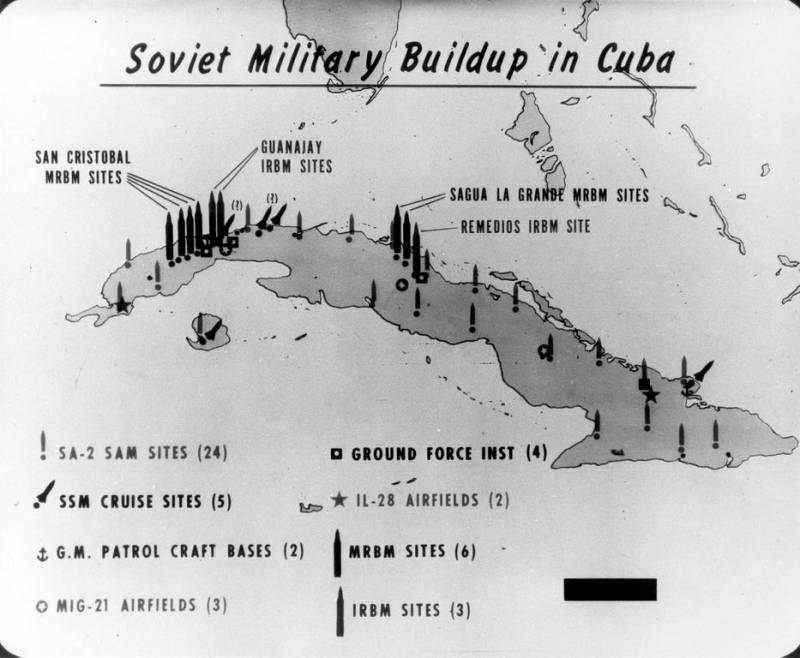
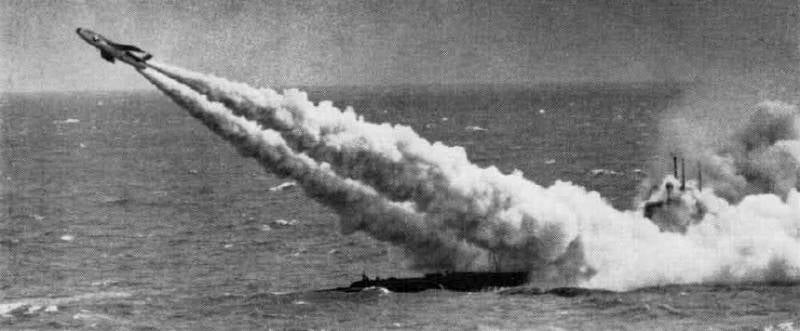
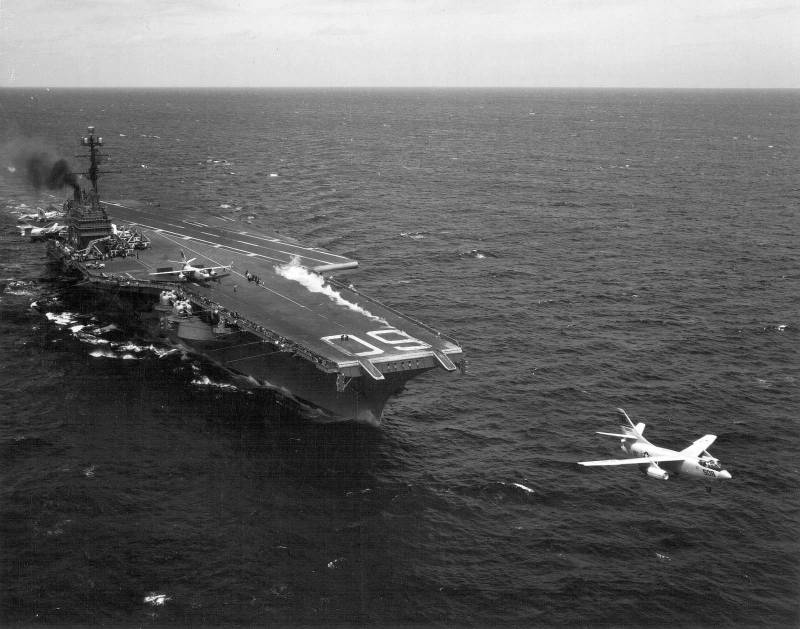
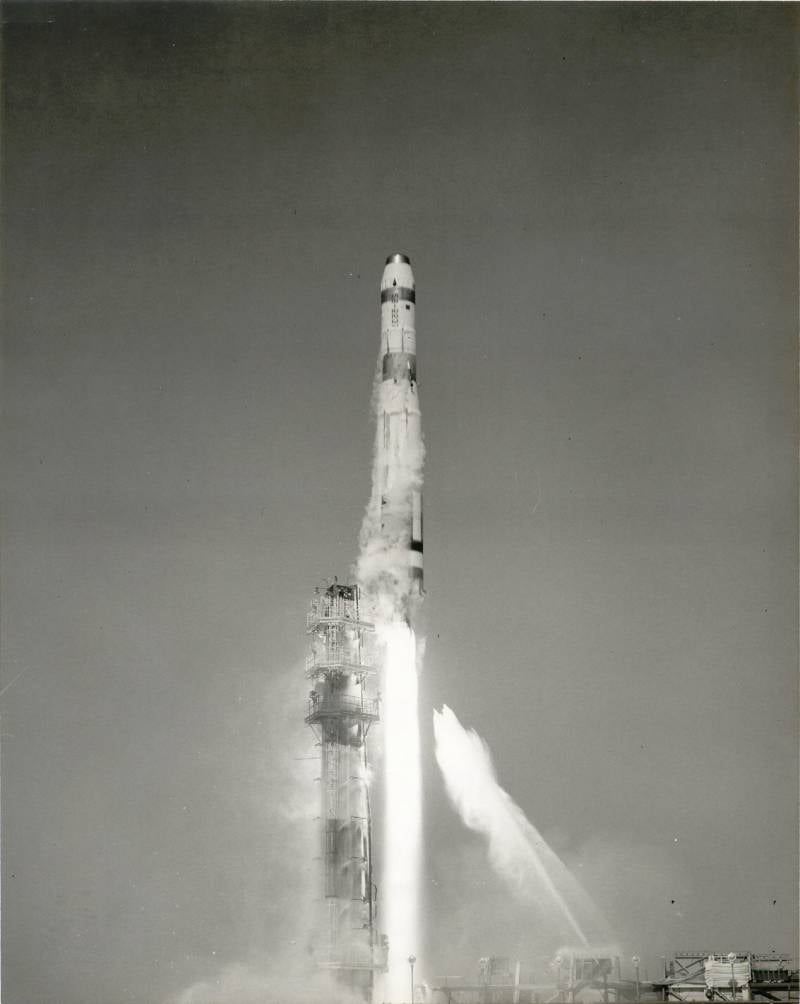
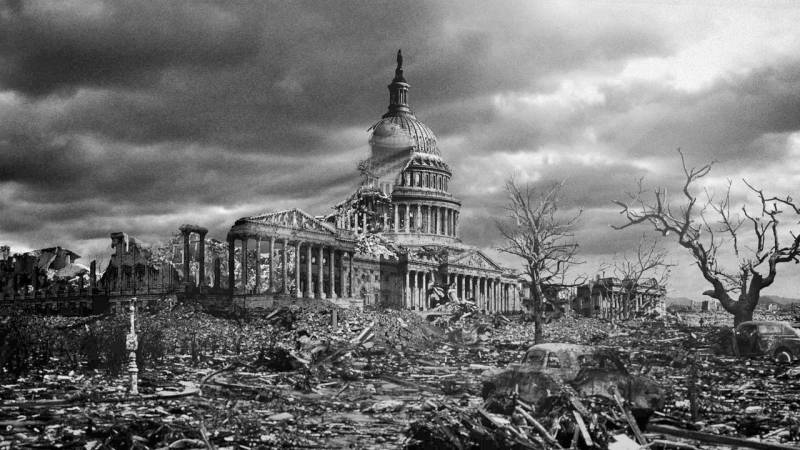
Information